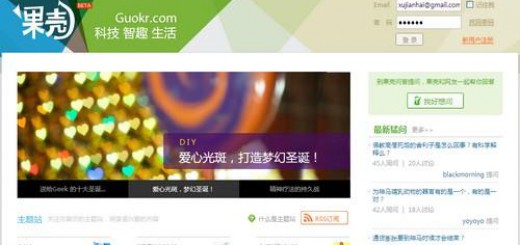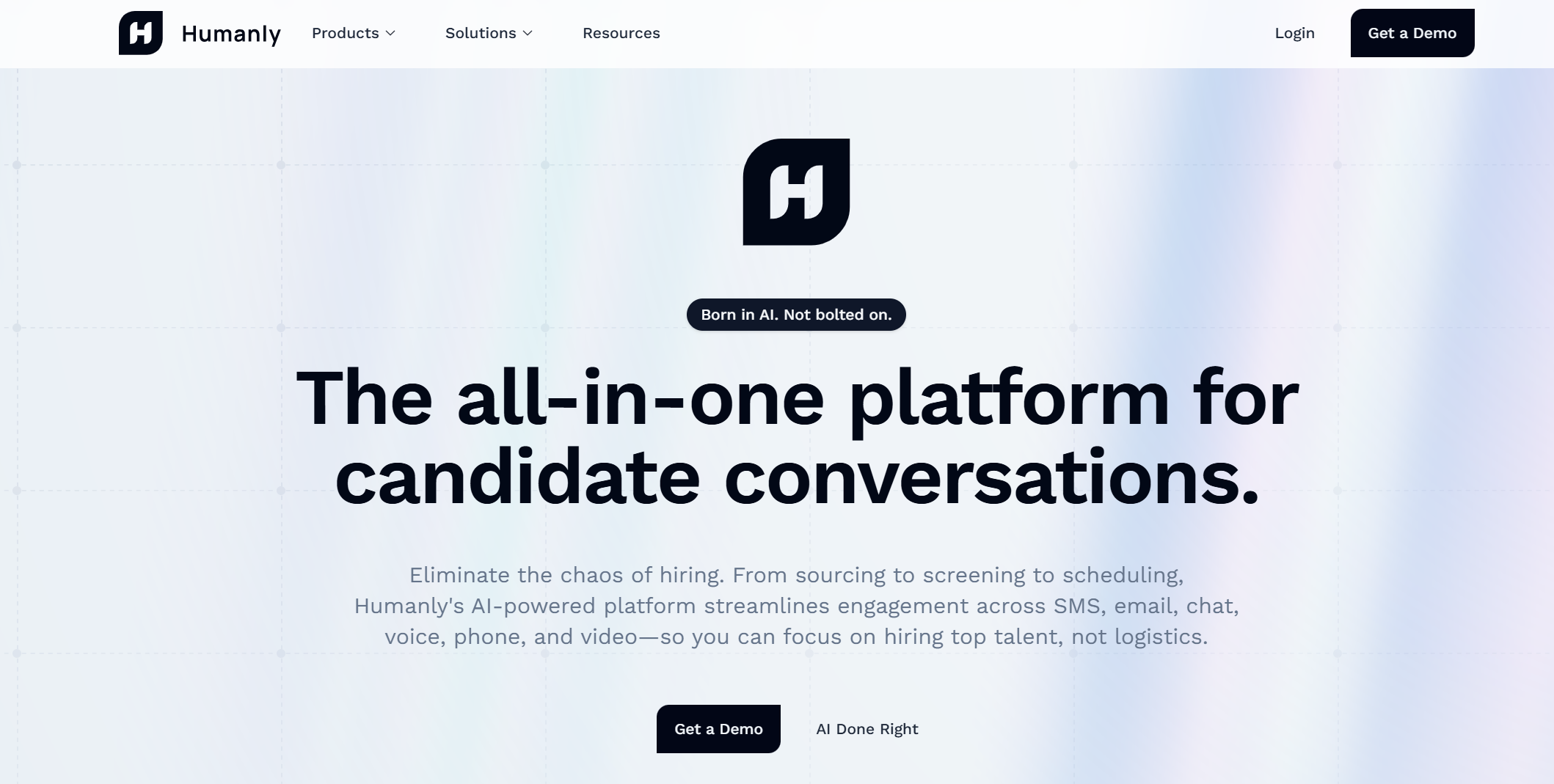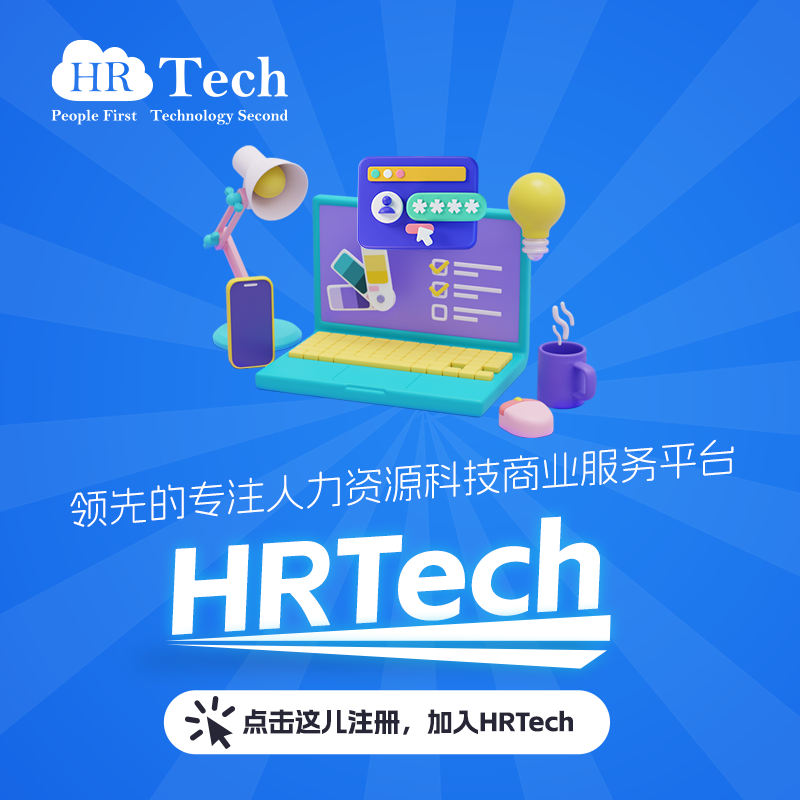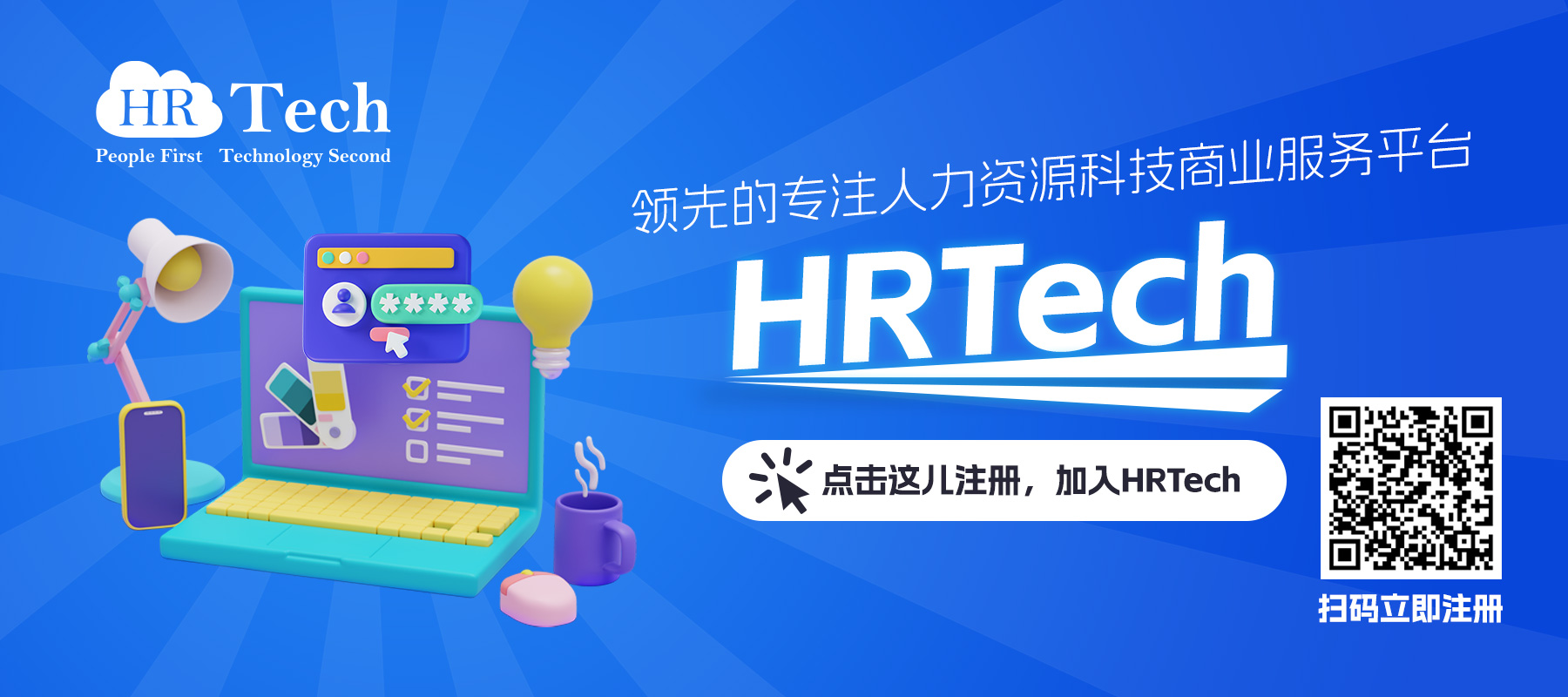资讯
纷享销客完成C轮5000万美元融资,DCM领投
纷享销客今日正式对外宣布完成C轮5000万美元融资,由DCM领投,A轮投资机构IDG资本、B轮领投机构北极光创投继续保持跟投,华兴资本担任本次融资独家财务顾问。
纷享销客成立于2011年12月,目前拥有超过7万家注册企业用户,同时活跃用户及付费用户则保持加速度增长。2014年以来,销售收入持续保持每3个月翻番的增长速度,员工人数从今年初的不到50人已增长到250人,代理商增长到100家。
官方宣布本轮融资将为正在加速升级的纷享销客提供资金保障。同时提前布局井喷的市场,最终完成纷享销客的“连接企业一切”的愿景。
据悉,本月纷享销客已经上线上下游企业间服务的报数系统,下个月将上线以服务代理商为核心的伙伴管理系统,专门为销售型企业实现全员营销的营销助手也将于近期上线。当用户覆盖面达到既定目标后,纷享销客将开放最核心的基础服务,为企业与企业之间的连接,企业与用户之间的连接。
纷享销客CEO罗旭表示:“我们从来没有把自己定义为一家简单的企业软件公司,“工具+平台+生态”才是我们未来发展的整体目标与愿景。本轮融资与IDG和北极光再次合作的同时,引入以眼光精准著称的DCM,是我们实现“连接企业一切”的重要里程碑。”
来源:猎云网
资讯
甲骨文收购数据即服务中间商 Datalogix
甲骨文 今天宣布收购数字营销公司、数据即服务中间商 Datalogix。此次收购不仅让甲骨文又增加了一款云工具,而且直指营销人员。甲骨文正与竞争对手 Salesforce.com 等激烈争夺营销市场。
甲骨文宣布收购消息时并未披露收购条款。
Datalogix 让甲骨文新增了一款数据驱动服务,可以帮助公司将消费者开支与在线广告活动联系起来。这是一套强大的组合工具,数字营销人员可以通过它了解在线广告活动是否转化为了线下购买。
甲骨文最新的财报让不少人惊讶不已,其云计算业务增幅巨大,宣称“云软件即服务、平台即服务和基础设施即服务 营收增长 45%,至 5.16 亿美元 ”。
甲骨文可能也意识到,其业务的未来在云上。考虑到甲骨文的总营收只增长了 3%,硬件收入只增长了 1%,其增速最大的领域明显是云。
而且甲骨文不仅仅观察到了云这一股趋势,数据驱动的营销工具也将成为未来潜力巨大的业务机会的一部分,而只需收购 Datalogix,甲骨文就能轻松进入这一市场。
星座研究公司 (Constellation Research) 首席研究员 R Ray Wang 表示,这笔交易的影响要超出大多数人的认识。“广告技术和数字营销的交叉是运用大数据的洞见,让广告活动参与到商业生命周期中。总之,甲骨文对于投资让广告活动参与到商业生命周期中的公司持很认真的态度。”
Datalogix 拥有 650 个客户,包括前 100 大广告主中的 82 个以及 8 家顶级数字媒体发布商中的 7 家。对于甲骨文而言,Datalogix 是很好的资产,尤其是考虑到 Datalogix 的客户既包括福特、卡夫食品等传统企业,也包括 Facebook、 Twitter 等科技公司。
尽管甲骨文很可能会让 Datalogix 独立运营,但肯定也有一些客户担心甲骨文在收购后会把 Datalogix 弄得一团糟。甲骨文不一定会这么做,但大公司收购好的小公司后任其衰败或彻改的例子也不少。这一问题对于 Facebook 而言尤其严重,因为 Facebook 将 Datalogix 作为衡量其线下消费者开支的关键工具。Facebook 需要将线下消费者开支与广告开支进行比较来证明投资回报率。
Datalogix 创办于 2002 年,目前已融资 8650 万美元。Datalogix 在今年 5 月获得了机构风险合伙公司 (Institutional Venture Partners) 和威灵顿管理公司 (WellingtonManagement) 的 4000 万美元 C 轮融资。Crunchbase 还报道称,Datalogix 在 8 月获得了另一笔未披露数额的融资。
Datalogix 的总部位于科罗拉多州的威斯特敏斯特市。
Oracle Continues March To Cloud Buying Data As A Service Broker Datalogix
Oracle added another piece to its growing cloud portfolio today, buying digital-marketing, Data as a Service broker Datalogix. The move not only gives Oracle another cloud tool, it’s one that’s aimed directly at marketers, an area where Oracle is fighting hard with rival Salesforce.com and others for dominance.
The announcement did not include terms.
Datalogix gives Oracle a data-driven service, designed to help companies link consumer spending with online ad campaigns, a powerful combination because it can help digital marketers understand if their online ad campaigns are actually translating into offline buying.
Oracle surprised some people in its latest earnings report when it showed significant growth in its cloud computing business, announcing “cloud software-as-a-service (SaaS), platform-as-a-service (PaaS) and infrastructure-as-a-service (IaaS) revenue was up 45% to $516 million.”
Oracle could be coming to the realization that the future of its business is in the cloud. Consider that total revenue was up just 3 percent and hardware revenue was up just one percent. Up is better than down, of course, but the biggest growth area is clearly in the cloud.
And the cloud isn’t the only trend at play here. Oracle recognizes that data-driven marketing tools are going to be part of a big potential business opportunity moving forward, and Datalogix gives them an easy in into that market simply by writing a check.
R Ray Wang, principle at Constellation Research says this is a bigger deal than most people realize. “The convergence of adtech and digital marketing is about taking big data insights and enabling the campaign to commerce lifecycle. The bottom line – Oracle is serious about investing in the campaign to commerce lifecycle,” Wang said.
Datalogix has 650 customers including 82 of the top 100 advertisers and 7 of 8 of the top digital media publishers. This is clearly a nice haul for Oracle, especially when you consider those customers include the likes of Ford and Kraft along with Facebook and Twitter.
While Oracle will more than likely welcome these big customers and leave Datalogix alone, there has to be some customer anxiety that the bigger company could mess with a key tool after acquiring it. It doesn’t necessarily make sense that Oracle would do that, but it wouldn’t be the first time a big company swallowed a good smaller one and let it rot or fundamentally changed it when it incorporated the acquisition into the larger organization. This could be particularly problematic for Facebook, which uses Datalogix as a key tool to power it’s offline consumer spending measurement, and then matches that to ad spend to prove ROI.
The company was founded in 2002 and has pulled in $86.5M in funding to-date. Its last significant round of funding was May of this year when it received $40M in Series C money from Institutional Venture Partners and Wellington Management. Crunchbase reports Datalogix also received an undisclosed amount of secondary funding in August.
Datalogix headquarters are in Westminster, Colorado.
来源:techcrunch
资讯
当大数据成为企业标配,HanSight 想做适应这个时代的安防体系
前有“移动互联网”,后有“云计算”,接下来是“大数据”。当“大数据”分析成为企业的标配,再反复提及它就变得不太有意义。相应的,在概念之外,适应新平台和思维方式的产品升级才是技术趋势的价值所在。
最早看到“大数据企业安全”这个字眼是在朋友圈里,回复里有人提到王淮在 Facebook 时就提出利用大数据做支付安全相关工作。和王淮工作更接近的是杭州同盾,而 HanSight 是想在金融之外做更泛化更具备普适性的企业内外整合安全方案。
目前 HanSight 的团队过去三年里都在做 Hadoop 相关业务。据 HanSight 联合创始人 Eric 描述,他们中国最早接触 Hadoop 开发和运维的团队之一,可以在在海量数据监测、分析时实现“秒级响应”。与此同时,HanSight 也是 Hortonworks 在中国的官方合作伙伴。“实现对海量数据秒级响应对现有的一线大数据团队来说并不是很困难的事,困难的是针对这些数据做出有效分析和应用”,Eric 说。HanSight 现在的两位核心算法和安全引擎工程师都来自趋势科技,其中之一的 Justin 曾经在趋势领导和国外知名公司 FireEye 产品类似的沙箱技术。
不同于传统企业服务商的物理整机安全方案,HanSight 仅提供纯软件解决方案。在 Eric 看来,传统机器弹性有限,无法应对业务或攻击规模的突发变化,且仅能分析过去十小时安全日志。而 HanSight 的企业日志分析方案能对企业现存的所有数据进行分析,同时对实时生成的数据进行存储和实时分析。
由于是纯软件解决方案,HanSight 的实际性能在一定程度上受限于客户实际使用的计算集群规模。但 HanSight 的架构能适应标准 x86 处理器,且对企业原有系统几乎不存在性能影响。于此同时,运行 HanSight 的服务器处于企业安放对象服务群的后方,可以对保护对象的异常做实时预警,从而规避因为服务器被 DDoS 等服务攻陷而无法正常保护的风险。
HanSight 的 DataViewer 日志抓取、存储、可视化呈现和自定义分析工具现在免费提供,明年会对外开源。这个工具可以实现上述的海量数据秒级读取和分析,企业 IT 人员可以自定义规则以利用被抓取和存储的工具。明年,DataViewer 会开始以 SaaS 的形式为企业提供标准化服务。之所以日志抓取和自定义分析工具免费,在 Eric 看来是因为“所涉及的技术大多通用、开源,优秀的团队实现起来并不难,真正的门槛在于算法和基于数据的安全智能分析服务”。
目前 HanSight 的安全分析服务主要针对企业内网进行,“外网攻击可以通过防火墙等成熟安全体系防御,但内网情况更加严峻而且复杂”,Eric 说。根据他的描述,当下流行的 APT (高级持续性攻击)会利用企业内部员工的设备漏洞通过内网缓慢找到管理层人员并利用相关信息进行内网提权、资料盗取,同时还可能发生监守自盗的案件。HanSight 会对企业内的每一个员工进行行为模式建模,当员工和员工使用的机器在内网内做出异常行为时就会对企业 IT 和相关负责人进行报警。由于 HanSight 在现阶段只负责 Alert 而不会对异常行为或受控机做出 Action,所以能够方便和企业内部 ERP 等管理系统对接。在客户允许或有需求的情况下,HanSight 会在之后提供安装于受控机的 Agent 端以实现更全面的数据抓取和行为分析。
虽然 HanSight 基于现有日志数据的分析和传统企业安全方案一样属于攻后防御,但部署 HanSight 之后加以 HanSight 的分析增值服务就会形成一套主动的“攻时防护”体系。HanSight 会根据异常行为做出实时报警,并且根据现有数据预测企业现存的漏洞和可能存在的安全薄弱环节。
当 Eric 提到他和团队成员在趋势的工作经历时,不免让我想到出版人周筠七年前经手的《挡不住的趋势》。趋势科技由一对台湾夫妇创办,因为巧遇技术实力超强的 CTO 而走上与国际知名杀毒软件竞争的大平台。我无法为 HanSight 的技术实力做出担保,但相比千禧年前后的初级和混乱,国内安全产业的技术及正规化程度已经和真正的国际一线水平接近。诚然,FireEye 和 PAN (帕罗阿图网络)里不乏中国面孔,但中国制造依然有别于中国智造。
(HanSIght 已在此前获得光速的千万级 A 轮投资)
[36氪,作者: sinCera]
资讯
“快法务”推出在线问答app“来问律师”,要做法律行业的春雨医生?
曾报道过“快法务”,这是今年 6 月 1 日上线的一家为创业公司提供与公司注册、合同文书、财税代理等业务相关的非诉讼法律服务的互联网法律服务提供商。快法务主要做了两件重要的事情:第一,把法律服务这种非标业务中中相对标准化的服务项目找了出来,并且通过对运营规则、运营流程的控制让自身服务尽可能标准化;第二,采用整合共享律师的轻公司模式,但同时通过一套评分机制来规范律师。
上线半年后,快法务紧接着推出了一个移动端问答咨询类 app:来问律师。用户随时随地可以咨询个人(C 端)或者公司(B 端)两个大类下的任何法律问题,专业律师针对问题提供解答,并且这个过程完全免费。 从模式来看,与春雨医生非常相似。
法律服务很大一部分是由咨询构成的,即使把这项服务搬到了互联网上,依然会有很多用户是带着问题而来并急于寻求解答的。因此,整个问答流程的快捷与高效优化是 app 的重点。“来问律师”目前提供的是异步的问答机制,当用户编辑完一条问题之后,继而选择这条问题的所属分类,然后便可以提交。目前,“来问律师”可提供的个人类法律咨询服务包括:婚姻家庭、交通肇事、劳动争议、债务纠纷等;公司类服务则包括:公司注册、投资融资、股权期权、合同事项、知识产权等。
法律垂直领域和医疗健康领域类似,都需要让专家来介入。来问律师基于快法务的律师运营流程、规则以及评价体系,做了一些改进。
与快法务一样,来问律师使用整合加盟的“轻介入”形式发展律师,通过一套律师资质审核、评定标准作为加盟门槛和考核指标,使用标准化培训来保证服务质量,同时使用“用户评价 + 律师积分和等级”体系来监督律师服务。我的理解是,在快法务整合了一批律师资源后,团队又对这些律师的价值进行了二次开发。
针对每一个咨询,系统都会根据律师的擅长领域与所在地区等标签,对问题进行筛选,让问题精准推送到最适合解答的律师面前。每一次咨询结束后,用户都可以对律师的服务在“响应速度 / 服务态度 / 专业程度”三个维度进行评价,而用户评价与解答采纳率都会影响律师积分。积分转化为律师等级,可以综合显示一名律师的服务水平与能力,积分和等级体系也作为律师服务监督的重要指标。同时,“来问律师”还加入了律师同行评价功能,增加律师之间的相互促进。
目前,律师提供的服务是免费的,那么如何让律师获益?一个健康的生态应该是用户—服务者—平台本身,三者都可以获益的有效循环。一方面,来问律师会给律师一定的补贴;另一方面,案源转化是来问律师能够带给律师的最直接的激励。律师自己通过平台与用户建立沟通之后也可以进行服务转化,给自己带来收入。只不过,现阶段的转化是非标准化的。在下一个版本中,来问律师会在平台上嫁接标准化的产品,律师直接通过这些标准产品获益。
[36氪,作者: 张雨忻]
资讯
职业社交或成在线招聘未来趋势
互联网给我们生活带来了许多便捷,各个行业受到其影响更是广阔。传统行业在被颠覆中寻求出路,越来越多的领域开始革新,以求顺应市场发展。单从招聘行业来讲,中美两国在这个领域发展各不相同,但可以看出,在线招聘领域的大势所趋。
美国在线招聘:职业社交是趋势
随着互联网及移动互联网的普及,招聘行业迎来黄金发展期,仔细梳理一下美国在线招聘领域,大致分为三大阶段:
1、综合招聘网站:打破信息壁垒
随着电脑与网络的普及,招聘网站大量涌现,作为美国最具代表性的综合类招聘网站,CareerBuilder和Monster这类综合招聘网站最大的意义在于解决了招聘领域媒介渠道稀缺问题(但精准性有待改善)。然而Web1.0时代信息的单向化以及用户黏性不够等缺陷局限了招聘网站的发展,其覆盖的人数正在出现明显的递减趋势,其业务模式的创新和突破能力不足也是显而易见的。
2、垂直招聘:精准时代到来
专注垂直领域的招聘平台Dice拥有由近10万个科技岗位组成的数据库;再如招聘信息搜索引擎“Indeed”聚合了来自于招聘板、新闻站点和公司招聘岗位等信息。这类网站在招聘领域找到一个细小的切口,单点突破,深挖垂直领域,让招聘领域精准化时代加速到来,但依然会受限于Web1.0模式的缺憾。
3、职业社交:不只是招聘,而是未来职场生态
Web2.0时代更加注重人与人之间的互动,招聘领域也开始迅速捕捉到全球化社交的潮流。相对于传统招聘来说,职业社交模式则更像是一个新的职场生态圈。职业社交的代表产品LinkedIn(领英)拥有3.3亿用户,遍及全球200多个国家,而且人数正在以每秒钟大约三人的速度增长。在这个生态圈中,用户通过职业社交平台建立自己的身份和品牌,并通过网络去不断拓展人脉,分享和沟通知识与经验,从而获得更多机会。
中国在线招聘:职业社交到来
两国在线招聘领域发展时间契合点不同,但都经历了相同都发展阶段,也将走向同一个终点,以下是国内在线招聘经历的三个时期:
1、成长期:“三座大山”称霸在线招聘领域
在国外, Monster、CareerBuilder、Dice.com等巨头一直牢牢把持着市场的大部分份额;在中国,则是“三座大山”——前程无忧(51job)、智联招聘和中华英才网常年雄霸网络招聘市场。且当美国在线招聘已经被领英这种职业社交属性的平台开始侵占的时候,中国的在线招聘领域还停留在以智联招聘为代表的传统招聘网站占据招聘市场主流的局面上。
2、洗牌期:新旧模式抢滩在线招聘市场
最近两三年,垂直互联网领域招聘的拉勾、引入职场吐槽的脉脉、专注于猎头的猎聘等应用的兴起,在一定程度上解决了细分领域精确性不足的问题,但仍然摆脱不了人才与需求的高度不匹配、盈利模式不清的问题。新旧招聘模式共存,国内在线招聘市场正在洗牌重组。
3、明朗期:职业社交到来,未来任重道远
2011年国内涌现出的一批领英模式的效仿产品开始进军在线招聘市场,如大街网、天极网、优士网等。然而它们由于自身产品的局限性、对市场没有足够耐心以及对高端职场市场把握能力不足,没有取得好的成绩。
依靠全球化的职场人际网络,国内的优秀企业除了可以通过领英这个国际平台走向世界,更能在领英的平台上引进各行各业所需要的高端人才。职业社交的全球化将奠定职场生态。相信在不久的未来,在线招聘将在职场生态的大环境里获得更大的成长空间。
资讯
化繁为简,Linkedin如何用大数据来变现
对Linkedin商业数据分析部门而言,大数据分析不是什么高高在上、复杂枯燥的工作,而是一门化繁为简、高效实用的艺术。
在大数据时代,商业数据分析部门对一个公司的重要意义不言而喻。目前,很多公司的数据分析部门采用的都是“分析放在报表之上”的分析方法,即每天产出非常繁琐、复杂、海量、事无巨细的分析报告,但这些分析报告的可理解性和可执行性并不强。而Linkedin作为一个典型的数据驱动的公司,在进行数据分析时却反其道而行之,采用了“报表放在分析之上”的方法,化繁为简,以最快的速度在大数据金矿中发掘出最多的商业价值。
据悉,自2011年商业数据分析部成立以来,Linkedin的销售收入已经增长了20倍,不仅如此,整个公司的各个环节都实现了数据驱动的自动快速的商业决策。近日,钛媒体驻美记者也独家专访了Linkedin商业数据分析部门第一位员工及部门总监Simon Zhang,对Simon而言,商业数据分析不是什么高高在上、复杂枯燥的工作,而是一门化繁为简、高效实用的艺术。
数据分析结构:从金字塔到菱形到球形
Linkedin无疑是一个建立在数据基础之上的公司,截至记者发稿时,其用户即将超过3.4亿人,庞大的用户规模也产生了海量的数据,这其中包括行为数据、身份数据、社交数据以及内容数据等,如何从这些海量的数据中挖掘出用户痛点从而推出适销对路的产品和服务是Linkedin商业模式的关键。
成立于2011年3月21日的Linkedin商业数据分析部门的主要功能正是通过数据分析支撑公司其他关键部门进行各种决策。目前,商业数据分析部门的70名员工可以支撑服务于全公司4500名以上的员工。
“自成立以来,每天,销售、运营、客户服务、工程、市场、产品等各个部门的员工都会向我们部门提出各种各样的问题,比如,用户对我们的主页面是否满意?我想推销某款人力资源产品,我该推销给哪个公司?等等。最初我们都是通过人工手动进行数据分析,但这样效率实在是太慢了,于是我们开始思考改革以往的数据分析的方法。”Simon表示。
和大部分公司一样,Linkedin最初采用的是金字塔形的数据分析架构,从下到上依次是:了解相关业务与产品;有目的地采集有用的数据;深度了解数据分析工具原理以及如何使用;数据分析;得出结论、作出决策。
而这几个步骤中,区分出不同水准的数据分析的关键点在于中间两个步骤。“了解你所使用的数据分析工具方面,目前很多分析人员不是太重视,因为他们认为编写数据分析工具是传统IT部门的事情,但实际上,能否深度地了解分析工具的运作原理对于你能不能充分正确地使用这个工具很关键,也是区别好坏分析人员的关键。
另一个关键点在于数据分析这一过程本身,在我多年的工作经验中,业界一致认为,好的数据分析都是善于化繁为简的,好的数据分析人员善于用最简单明了的方式呈现最核心的价值。”Simon告诉钛媒体。
正因如此,在人人都在讨论大数据的时代,Linkedin对数据分析的最重要的两个要求就是“速度要快并且产生价值”。
只有速度够快才能形成规模化,才能产生规模的价值,而传统的金字塔型的数据分析架构使得分析人员在金字塔的中下段部分花费了过长的时间(85%-95%的时间),因此,2010年底至2011年初,Linkedin开始考虑将金字塔结构变为菱形结构。
“变成菱形结构的主要方法就是,不断创造自动化的工具代替传统金字塔底层的工作,将金字塔所有可能的环节尤其是中下部分的工作让机器自动完成,” Simon表示,“特别需要注意的是,金字塔变成菱形是一个不断迭代的过程,每一个变成菱形的数据分析结构,我们会将其再次变成金字塔形,然后再次优化变为菱形,如果说每一个菱形面积仅有原来的金字塔面积的一半的话,经过多次转化和迭代之后,整个数据分析的效率将被大大提升。”
据悉,在将金字塔形的数据分析结构变为菱形后,Linkedin商业数据分析部门再次对其进行了优化,将菱形结构变成球形结构,形成闭环,“目前我们商业分析部门已经开发出了几百个面向内部员工的闭环的球形产品,每一个产品都可以实现从产品到数据收集到分析到决策的一个闭环流程,这也就意味着每一个球形产品不仅可以实现高效的分析和决策,还能形成闭环、自动升级和迭代”。
(分析决策:从三个月到一分钟)
对于大数据分析,Linkedin认为效率是第一准则,用最短的时间产生真正的价值比面面俱到的分析更加重要。而通过商业数据部门近几年开发出的几百个面向内部使用的产品,Linkedin所有部门的员工都可以真真切切地感受到工作效率的飞速提升。
案例一:市场和销售团队支撑产品——Merlin
对于Linkedin的每一个产品销售人员,当他接到销售某一款产品的任务时,他至少会产生以下几个主要疑问:
1.我该把这款产品卖给哪家公司?
2.我应该联系谁?谁有采购的决定权?
3.我应该怎样去联系这个人?
4.我该派谁去联系这个人?是我自己去合适还是我的某位同事去更适合?
5.到这家公司后我该讲一个怎样的故事打动客户?
在传统的人工手动的数据分析模式下,对于某一款特定的产品,其销售人员想搞清楚以上几个问题并作出一个见客户时使用的销售PPT至少需要2周到2个月的时间,而今天,通过Linkedin市场和销售团队支撑产品Merlin,销售人员仅需要登陆系统,输入自己的名字以及需要销售的产品名称等基本信息,Merlin可以自动收集销售人员的背景数据和人脉网络数据,从而快速生成较为精准的销售方案,从输入基本信息到销售方案的生成仅需要一分钟的时间,销售人员甚至可以得到系统为他量身定制的销售PPT。
“传统进行2个月的调研也未必可以得到精准的方案,而目前仅需要一分钟的时间,我们最近还把Merlin安装到了销售人员的手机上,实时对销售人员进行支撑,目前Linkedin一共有3000多人在使用Merlin系统,”Simon表示,“销售方案的自动化生成也使得我们在招聘销售人员时变得简单,不需要过多的培训便可迅速上岗。”
案例二:产品测试团队支撑产品——A/B Testing System
对于Linkedin测试部门而言,在传统环境下,其想要完成一项测试工作起码需要3个月时间,而目前,通过A/B Testing System,仅需要一分钟的时间便可以从每一项测试的650个指针中抓取出几个关键指标,提出改进意见,从而以最高的效率对测试产品进行改进。
“传统环境下,十几个人3个月才能完成的测试工作,目前仅需要一分钟,目前A/B Testing System每天可以支撑2000个内部测试,每一个测试追踪650个以上的指针,通过抽取最关键指标的方式对产品提出改进意见,”Simon表示,“我们不追求尽善尽美,我们只追求每天进步一点点,事实上,只要每天可以在原有基础上进步1%,一年之后的进步成果将是惊人的。”
案例三:客户服务团队支撑产品——Voices
对Linkedin客服部门而言,如何衡量用户满意度一直以来都是一个难题,因为通常客服人员们只能从用户留言等非结构化的数据中收集到一些信息,但如何将松散凌乱的非结构化数据变为可衡量改进的结构化数据一直没有得以解决。
直到Linkedin商业数据分析部门推出客户服务团队支撑产品——Voices,传统无法结构化的数据仅需要一分钟便可生成分析报告,比如,如果客服团队想知道目前Linkedin的客户对于主页是否满意,其仅需要在Voices中输入“Homepage”,便可以瞬间得到结构化的可视的用户满意度数据。当然,瞬间获得结果的背后一定是严谨而先进的算法。
(从写模型到写机器人)
事实上,如上的例子还有很多很多,Linkedin商业数据分析部门自成立以来一共推出了几百款这样的产品,每天都在为每一个Linkedin员工提高工作效率和效果而努力。不仅如此,每款上述产品还可以自动地学习员工的使用习惯,以保证员工在下次再次使用相同的软件时响应速度会更快。“对Linkedin员工而言,我们的每一款产品都是为他们个性化打造的。”
规模自动化的结果当然是效率和效果的大幅提升,据悉,自2011年商业数据分析部成立以来,Linkedin的销售收入已经增长了20倍;其他所有环节的工作效率也大幅得以提升。
“我们不会满足于此,以前我们部门的主要任务是写模型,从2013年,我们部门开始设计写模型的机器人,这又进一步加快了公司在数据分析时的自动化和高效率。”Simon表示。
(作者为钛媒体驻硅谷记者陈琛,本文首发钛媒体)
资讯
果壳网获2000万美元C轮融资 好未来领投
[摘要]此前,果壳网曾先后获得挚信资本和IDG两轮融资。
果壳网今日正式对外宣布完成C轮融资,获投2000万美元。本轮融资由好未来领投1500万美元并购得果壳网少数股东权益,果壳网原有股东IDG等投资机构跟投500万美元。
果壳网创始人兼CEO姬十三表示,果壳未来将在教育学习方向继续发力。原有的科学内容生产和传播业务,再加上教育学习类产品,果壳正在完善知识产品的生态系统。
姬十三称,果壳看重好未来在教育领域的积累,好未来以K12优秀学生理科辅导服务见长,其覆盖人群与果壳覆盖青年知识爱好者很好衔接,双方业务在人群互补上有很多想象空间。
好未来联合创始人、好未来集团投资事业部总经理刘亚超表示,本次与果壳网合作,好未来将借助果壳MOOC学院平台链接中国和世界优质教育资源,加速对旗下在线教育业务的拓展创新,这与之前我们投资鲨鱼公园科技课程,及投资Minerva大学的逻辑一致。
刘亚超称,在业务领域,果壳网集合了以大学生为主的科技爱好者,可以与学而思中小学数理化业务实现年龄层互补,帮助好未来完善更高层级的教育领域。“因此,注资果壳网对我们来说是面向未来打造全新教育模式、进一步扩展中小学以外潜在客户群体的极好机遇。”
据业内人士透露,果壳此次获得由好未来领投的2000万美元C轮融资,与果壳旗下在线学习社区“MOOC学院”(mooc.guokr.com)的快速发展有很大关系。
据果壳官方报告显示,MOOC学院的注册用户已达80万。与果壳整体用户群体相比,MOOC学习者更年轻,以大学生和工作3年内的年轻白领为主。同时,利用MOOC提前学习大学课程的中学生人群正在快速增长。为那些有超强学习欲望的90后、95后提供机会和帮助。
果壳网曾先后获得挚信资本和IDG两轮融资。2013年初,果壳网开始进行自我拆解,围绕“用科学服务生活”的理念,从泛科学知识社区向各细分领域下沉分化。
2013年7月,“MOOC学院”正式上线,为中文MOOC学习者提供选课评价、交流讨论、笔记分享等服务;2014年,果壳原有媒体频道升级为服务深度用户的专业科学传播栏目“科学人”;热门小组“果壳性情”独立孵化为“知性”App,果壳投资参与创建的“深圳智能硬件企业小蛋科技”推出首款智能产品——“小蛋智能空气净化器”,获得广泛关注。
MOOC学院从2013年开始,与全球最大MOOC平台Coursera建立了长期的战略合作关系,联手推出了校园大使、课程推荐、社区运营等多项合作计划,MOOC学院和澳大利亚、德国、英国等国平台的深入合作正在进行中,力求为中文用户学习全球教育资源提供流畅服务。
好未来这两年也在不断投资在线教育领域:
2013年3月,好未来以现金308万美元收购第三方在线网络平台多贝网16.85%的股份;
2013年12月,好未来以850万美元的价格收购考研网;
2014年1月,好未来宣布投资母婴网站宝宝树,投资金额1.5亿元人民币。
2014年8月,好未来投资英语备考平台LTG;
2014年10月,好未来战略投资儿童科技素质教育培训公司鲨鱼公园;
2014年10月,好未来投资1800万美元于Minerva Project;
2014年12月,好未来投资CG在线教育平台奇迹曼特,涉足职业教育。
一位好未来人士透露,好未来在教育领域的投资逻辑是:好未来做好K12的教学部分,剩下的在线教学领域愿意跟所有品类人合作。
腾讯科技 雷建平 12月22日报道
资讯
2014年12月19日中国人力资源科技论坛圆满落幕!
2014年12月19日,由HRTechChina主办,HRsalon协办的2014年中国人力资源科技论坛在上海国信紫金山大酒店成功召开。由德勤中国区招聘总监王文佶先生担任本届科技论坛联合主席并主持,全球人力资源科技论坛特邀嘉宾叶阿次先生、百度人力资源信息系统负责人王崇良先生、HRsalon资深顾问杨冰先生等近20名大中型企业人力资源高管及COE专家以及近500位人力资源从业者以及云学堂、搜魔网络、猎聘网、明基逐鹿、微学堂等多家国内知名企业及优秀科技厂商等齐聚一堂, 以“人力资源科技”为主题,共话未来,探索移动互联网时代的组织核武器,共建HR行业新标准!
论坛在王文佶先生的开幕致辞下,上午由叶阿次先生。王崇良先生、猎聘网华东区经理李晓峰先生分别就“2014年人力资源科技发展趋势”、“如何善用科技的力量武装我们HR自己”、及“人力资源在移动端的应用”等话题发表演讲,获得HR们的一致认可及欢迎。
同时在上午的论坛,由“HRday冠名高端互动”环节,由德勤中国区招聘总监、本届科技论坛联合主席王文佶先生对话2014年HRTECH全球论坛特邀嘉宾叶阿次博士、实银资本副总裁许恩俊先生及百度人力资系统负责人王崇良先生,共同探讨2014年中国人力资源科技的发展趋势。
在本届中国人资源科技论坛demo show环节上,由云学堂、明基逐鹿、HRday、微学堂、猎聘网等优秀人力资科技企业参与,与参会者共同探讨分享最新,最好用的人力资源科技产品,碰撞思维,激荡风云!
同时,在下午的论坛中,“资深人力资源信息化专家”,明基逐鹿资深人力资源顾问楼拯、仟寻网CEO王向导、云学堂人力资源总监丁翔以及HRsalon资深顾问杨冰分别发表演讲,共同与与会者探讨“招聘创新无处不在”、“云时代下组织学习的生态圈”、“数据时代人力资源素质模型”等话题,让人力资源从业者如何在科技时代,更好地将“云”、“数据”等融入到人力资源工作当中,如何更好地将招聘在科技时代下更好地创新。
同时,我们也非常感谢对本次论坛予以大力支持的机构:搜魔网络、猎聘网、明基逐鹿、云学堂、爱康国宾、HRday.com、微学堂、仁云科技、GHP等。
本届12月19日的中国人力资源科技论坛也是本年度的收官之作,我们感谢在这一年中所有参加过我们大会的你们,感谢大家的热情关注与支持,敬请期待2015我们的活动,我们会在各位的支持与陪伴下,越办越好,谢谢!
资讯
Zenifits 入选福布斯杂志2014年估值最快的15家公司
福布斯杂志网络版按照投资行为研究公司VC Experts提供的数据,找出了在2014年内估值增长最快的15家公司,当中有一些人们熟悉的公司,比如Uber、Indiegogo和Dropbox,也有人们不熟悉的,比如好莱坞著名影星杰西卡·奥尔芭(Jessica Alba)创立的环保产品电商公司The Honest Company。根据监管机构文书显示,这15家公司的估值平均增长水平达到了4.5倍。
其中:Zenifits入选第一名。
Zenifits为企业用户提供基于云端的人力资源管理服务。简单来说,如果你是一家初创公司的管理者,希望采用最纯正的“精益创业”原则指导公司的运行发展,那么你一定希望多聘几个全栈工程师,少聘HR和行政。Zenifits的产品的切入点就在这里,企业用户可以使用它来管理薪酬、福利、补贴等种种繁琐的事项。目前,已经有超过2000家不同规模的公司在采用Zenifits提供的云端HR服务。
Zenifits创立于2013年,毕业于YC,共完成3轮8360万美元融资,投资者当中有SV Angel、A16Z,以及前文提到的演员/歌手兼投资人Jared Leto。2013年6月Zenifits拿到种子轮210万美元,剩下的8150万美元A轮和B轮融资都在今年完成,公司估值暴增到6.5亿美元,拿下了福布斯杂志评选15家增长最快创业公司的第一名。
前几天我们刚报到过:
Yammer创始人David Sacks加入Zenefits任COO
http://www.hrtechchina.com/archives/4925
复制去Google翻译翻译结果
资讯
甲骨文第二财季净利25.02亿美元 同比下滑2%
[摘要]期内甲骨文总营收达到96亿美元,同比增长3%,超分析师预期。
甲骨文今天发布了该公司截至2014年11月30日的2015财年第二财季财报。财报显示,2015财年第二财季,甲骨文总营收达到96亿美元,比去年同期的92.75亿美元增长3%;净利润达到25.02亿美元,比去年同期的25.53亿美元下滑了2%。
财报显示,由于第二财季业绩超过了分析师的预期,甲骨文当日盘后股价呈现上涨局面。甲骨文第二财季营收为96亿美元,超过了华尔街分析师平均预计的95亿美元;不按照美国通用会计准则计量的每股摊薄利润为0.69美元,超过了华尔街分析师平均预计的0.68美元。
财务分析:
甲骨文第二财季总营收达到96亿美元,比去年同期的92.75亿美元增长了3%;其中,软件和云服务营收为73.29亿美元,比去年同期的69.93亿美元了5%;云软件即服务(SAAS)、平台即服务(PAAS)和基础设备即服务(IAAS)营收共计为5.16亿美元,同比增长45%;硬件系统营收达到13.34亿美元,比去年同期的13.23亿美元增长了1%;其它服务营收为9.35亿美元,比去年同期的9.59亿美元下滑了3%;新软件授权营收为20.45亿美元,比去年同期的21.21亿美元下滑了4%。
甲骨文第二财季总运营支出为60.56亿美元,比去年同期的58.65亿美元增加了3%;其中销售和营销支出 为18.97亿美元,比去年同期的18.77亿美元增长了1%;
甲骨文第二财季按照美国通用会计准则计量的运营利润达到35.42亿美元,比去年同期的34.10亿美元增长了4%;按照美国通用会计准则计量的运营利润率为37%;不按照美国通用会计准则计量的运营利润为44亿美元,同比增长3%;不按照美国通用会计准则计量的运营利润率为46%。
甲骨文第二财季按照美国通用会计准则计量的净利润为25.02亿美元,比去年同期的25.53亿美元下滑了2%;不按照美国通用会计准则计量的净利润为31亿美元,同比下滑1%。
甲骨文第二财季按照美国通用会计准则计量的每股摊薄收益为0.56美元,与去年基本持平;不按照美国通用会计准则计量的每股摊薄利润为0.69美元,同比增长1%。
甲骨文在过去的12个月中按照美国通用会计准则计量的运营现金流量为153亿美元。
资产:
截至2014年11月30日,甲骨文持有的现金和现金等价物总共达到161.53亿美元,持有的可兑换债券价值为285.80亿美元;截至2014年5月31日,甲骨文持有的现金和现金等价物总共达到177.69亿美元,持有的可兑换债券价值为210.50亿美元。
红利:
甲骨文董事会还宣布发放了季度红利,流通在外的普通股每股红利为0.12美元,这一红利将发放给在2015年1月7日美国股市交易结束之前登记在案的股东,这笔红利将于2015年1月28日发放。
股价表现:
在周三的美国股市常规交易中甲骨文股价上涨0.53美元,报收于41.16美元,涨幅为1.3%;在发布上述财报之后的盘后交易中(截至发稿之时),甲骨文股价又上涨了1.24美元,到42.40美元,涨幅为3.01%。在过去的52周,甲骨文最高股价为43.19美元,最低股价为33.70美元。(悦潼)
来源:腾讯科技 12月18日
扫一扫 加微信
hrtechchina
 资讯
资讯
 资讯
资讯
 资讯
资讯
 资讯
资讯
 资讯
资讯
 资讯
资讯
 资讯
资讯
 资讯
资讯
 资讯
资讯





 扫一扫 加微信
hrtechchina
扫一扫 加微信
hrtechchina




